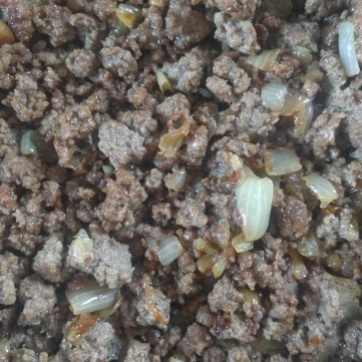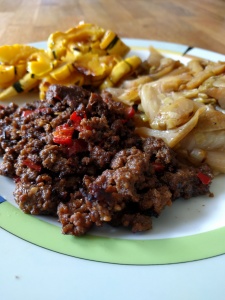I’ve mentioned on the blog before that I’m a big fan of cooking and an even bigger fan of eating. As a “personal finance blogger” (in name only, really), one would expect that my reliance on home cooking is mostly for finances, but I am here to tell you ’tis not so. I mean, saving money is great and all, but the real reason I cook most of my meals is for my health. The physical kind, not the financial.
I was nineteen when I suddenly and painfully became lactose intolerant. Without getting too much into it, it took a complete overhaul of my food intake to figure out what was going on. I tried various elimination diets. Through trial and error, I learned that, in additional to my lactose intolerance:
- I cannot eat tomatoes for more than two meals in a row,
- I cannot eat certain spices,
- Non-fibrous carbohydrates give me drastic energy spikes and can greatly exacerbate my anxiety,
- I am extremely sensitive to caffeine and other stimulants,
- I have mild sensitivity to wheat, and
- Chocolate makes me break out.
You know how much American fast food contains one of: dairy, non-fibrous carbs, or tomatoes? Like, 95% of it.
So, out of necessity, I started cooking all my meals myself. Obviously from my food spending, I don’t cook everything still. But, I’ll cook most of what I eat. And given my new diet, I figured out what I could make that would not only taste good, but make me feel good.
At this point, I have everything down to a system. I eat 150 kcals of almonds or cashews each morning, offered free at my workplace. Sometimes I’ll drink tea in the morning, but only once in a while since multiple days of green tea can literally keep me awake and jittery at night. Each week I get a delivery of my vegetable CSA, each month a delivery from my meat CSA. Once a week, I break out my podcasts and let myself flow into cooking. This week I set aside four hours to turn a pound of ground beef and this:
Into this:
From the top, left to right: roasted watermelon radishes and beets, stir fry broccoli with peppers and onions, romaine lettuce, sweet potato fries, roasted cabbage, celeriac puree, kale chips, and ginger ground beef stir fry.
(Obviously I’m a big fan of roasting. It’s almost impossible to screw up! If I ever own a restaurant, I’ll name it Maillard in appreciation.)
Using my prepped food, it’s easy for me to throw together meals. Sometimes I’ll put together a protein with a carb and vegetables and call it a day. Other times i might supplement with some simple cooking. From the above, I was able to throw together a root vegetable salad, beef lettuce wraps, and Asian fusion sweet potato poutine.
Because I’m always getting 8-15 pounds of vegetables a week, I don’t worry too much about my micronutrient intake. I don’t have to sacrifice health for taste, either. Cooking all my meals means I can generally avoid unnecessary fat, sugar, and salt and season everything just the way I like. Instead of a heavy cream-filled ranch, I can throw together my own delicious savory dressing from olive oil, balsamic vinagerette, sesame oil, soy sauce, white miso paste, and just a dash of honey. Shaking smooth until a deep brown gravy forms, it makes for a delightful concoction of tang and umami while still keeping everything feeling light. In spite of and sometimes because of the health-consciousness of my meals, I’ll get semi-jealous sometimes-digs, sometimes-compliments from my coworkers on how my food smells in the office kitchen. Having everything already on hand is also great in that it reduces my daily stress– I never have to worry about planning my next meal.
Note that while I mention how wonderful cooking has been on multiple dimensions– health, taste, daily convenience– I don’t really harp on it being cheaper. That’s because, for about $45 worth of ingredients (including spices and oils), I only make about 10 meals worth of food. Assuming I could buy fast food for $10/meal and that I spend 4 hours/week batch cooking, I only really save $55/week or about $13.75 per hour of my time. While it’s not nothing, the benefit here in terms of cash is dwarfed by the benefits in terms of living.
Why do you cook? What’s your cooking style?














